
Endangered Species Act Section 7(a)(1)
What is Sec 7a1 Conservation?
Section 2(c)(1) of the ESA declares that it is “…the policy of Congress that all Federal departments and agencies shall seek to conserve endangered species and threatened species and shall utilize their authorities in furtherance of the purposes of this Act.” The primary mechanism for implementing this policy is identified under section 7(a)(1) of the ESA, titled “Interagency Cooperation,” which obligates all Federal agencies and provides them the authority to reasonably modify their actions and conduct their missions in a manner that assists in the conservation (i.e., recovery) of species listed as endangered or threatened. Section 7, therefore, provides a mechanism to share the responsibility and cost of listed species recovery among all Federal agencies.
Benefits:
- Allows USACE to be proactive in consultation and conservation processes rather than reactionary
- Reduces surprises and conflicts
- Listed species needs and potential conflicts considered early in action agency planning and budgetary processes
- We commit to actions we would be predisposed to undertake anyway under 7(a)(2)
- Reduce future 7(a)(2) consultations
- Increases likelihood of species recovery.
Resources:
Endangered Species Act Section 7(a)(1) Southeast Region Implementation Framework
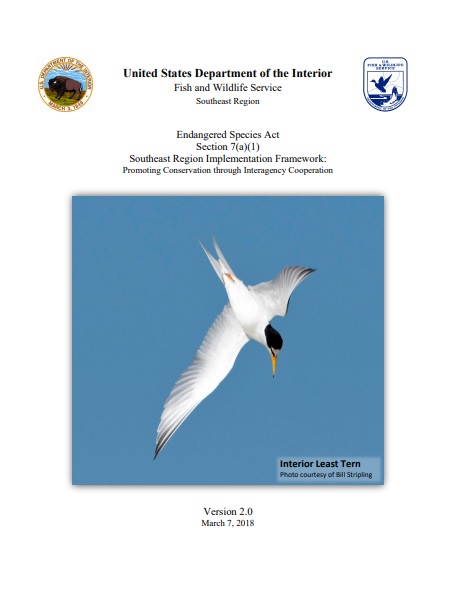
U.S. Fish and Wildlife Service/Southeast Region. Version 2.0, 7 March 2018. Endangered Species Act Section 7(a)(1) Southeast Region Implementation Framework: Promoting Conservation through Interagency Cooperation, 38 p. (PDF)
Integrated process review: section 7(A)(1) consultation between the U.S. Army Corps of Engineers and U.S. Fish and Wildlife Service, for channel improvement program Mississippi River and tributaries project
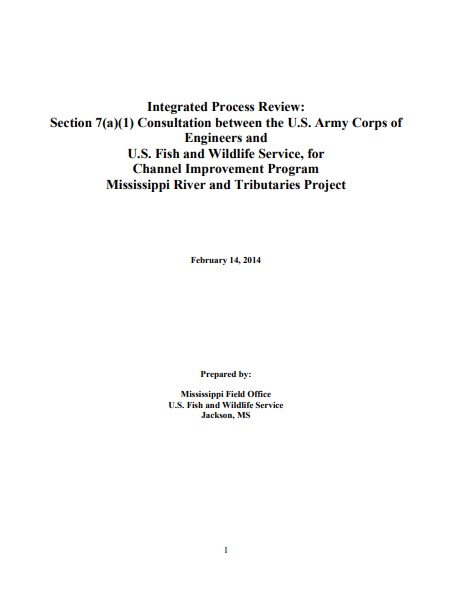
U.S. Fish and Wildlife Service/Mississippi Field Office. 14 February 2014. Integrated process review: section 7(A)(1) consultation between the U.S. Army Corps of Engineers and U.S. Fish and Wildlife Service, for channel improvement program Mississippi River and tributaries project, 19 p. (PDF)
Better conservation more efficiently: A guide for federal agency compliance with Section 7(a)(1) of the Endangered Species Act
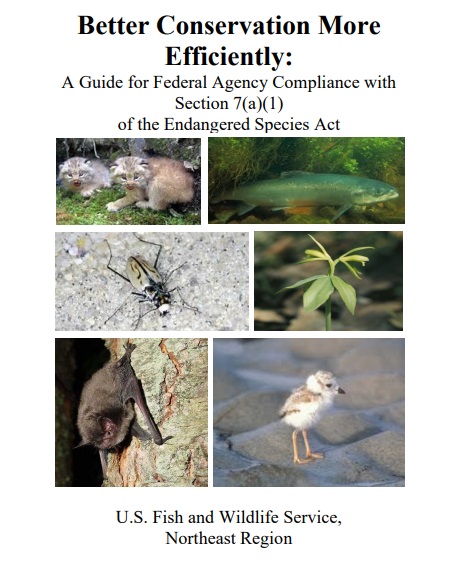
U.S. Fish and Wildlife Service/Northeast Region. 31 January 2018. Better conservation more efficiently: A guide for federal agency compliance with Section 7(a)(1) of the Endangered Species Act, 19 p. (PDF)
Regional Endangered Species Act Section 7(a)(1) Guidance Memo
(1)-GuidanceMemo-screenshot.jpg)
U.S. Fish and Wildlife Service/Northeast Region. N.D. Regional Endangered Species Act Section 7(a)(1) Guidance Memo, 2 p. (PDF)
Conservation Plans:
Programmatic biological assessment: Red-cockaded woodpecker (Picoides borealis) recovery and sustainment program
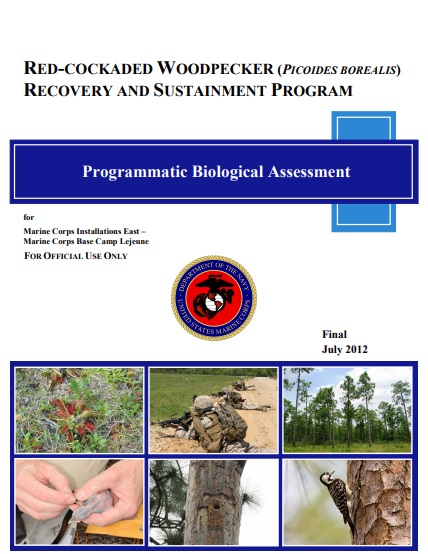
U.S. Marine Corps/Marine Corps Installations East-Marine Corps Base Camp Lejeune. July 2012. Programmatic biological assessment: Red-cockaded woodpecker (Picoides borealis) recovery and sustainment program (FOUO)
Candidate Conservation Agreement: Camp Shelby Burrowing Crayfish Fallicambarus gordoni
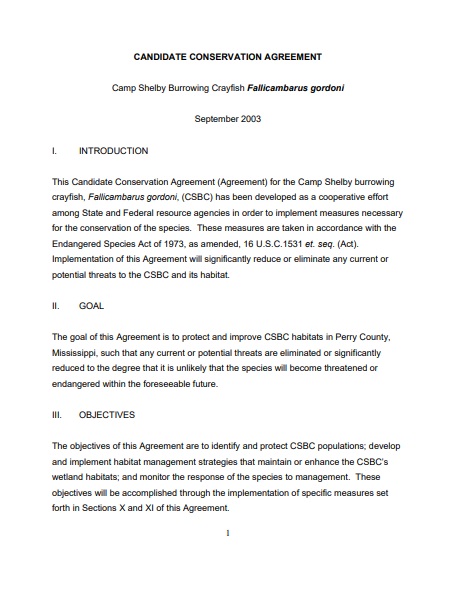
Camp Shelby. September 2003. Candidate Conservation Agreement: Camp Shelby Burrowing Crayfish Fallicambarus gordoni (PDF)
USACE Mississippi Valley Division Conservation Plan
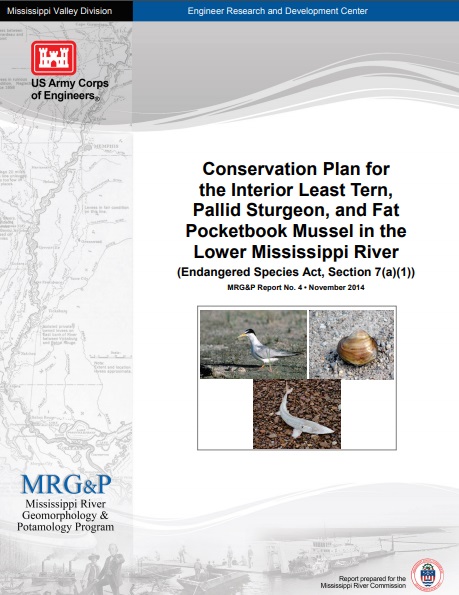
U.S. Army Corps of Engineers/Mississippi Valley Division. 2014. Conservation plan for the interior least tern, pallid sturgeon, and fat pocketbook mussel in the lower Mississippi River (Endangered Species Act, Section 7(a)(1)), 100 p. Conservation plan (PDF)
Omaha District Conservation Plan
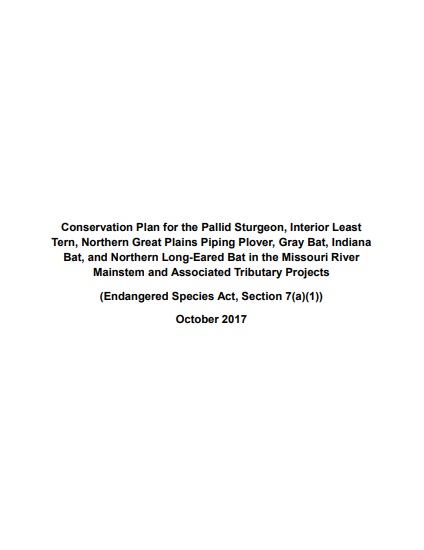
U.S. Army Corps of Engineers/Omaha District. October 2017. Conservation plan for the pallid sturgeon, interior least tern, northern great plains piping plover, gray bat, Indiana bat, and northern long-eared bat in the Missouri River mainstem and associated tributary projects (Endangered Species Act, Section 7(a)(1)), 13 p.Conservation plan (PDF)
Memphis District. nd. Conservation plan
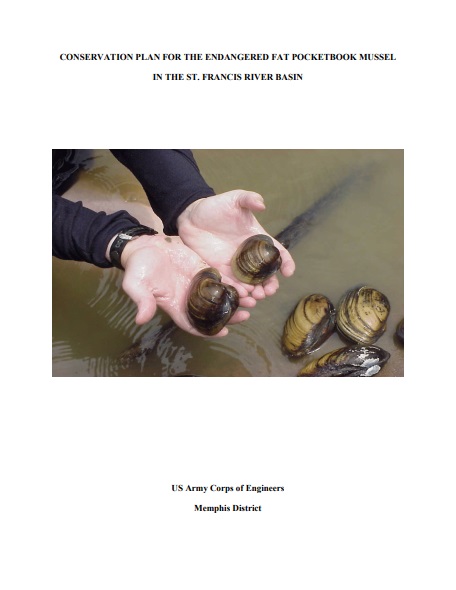
U.S. Army Corps of Engineers/Memphis District. nd. Conservation plan for the endangered fat pocketbook mussel in the St. Francis River basin, 14 p. Conservation plan (PDF)
